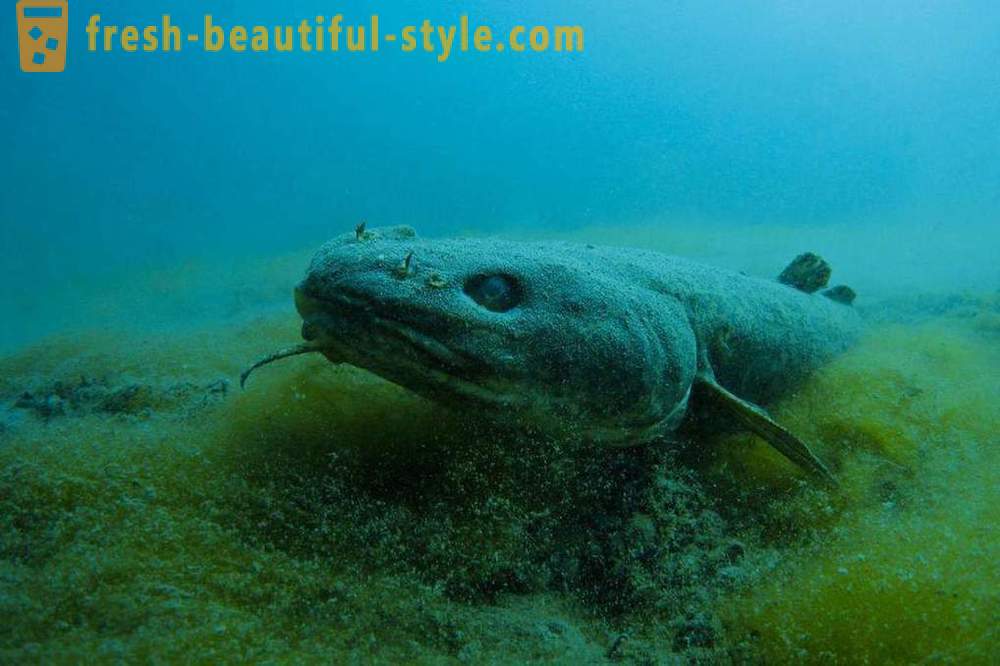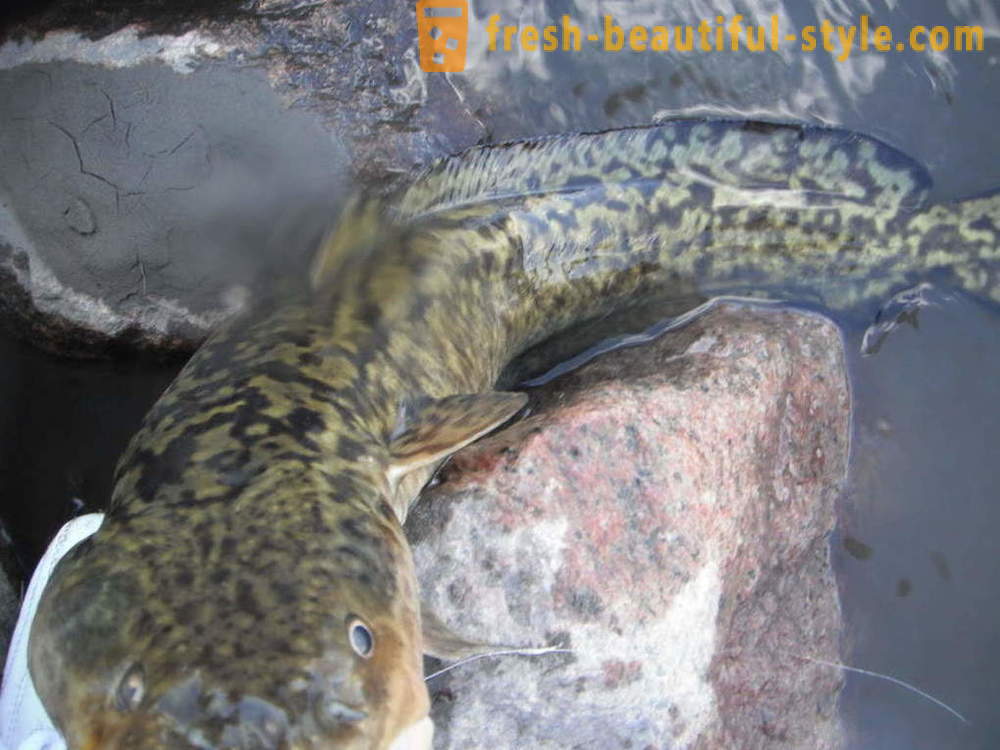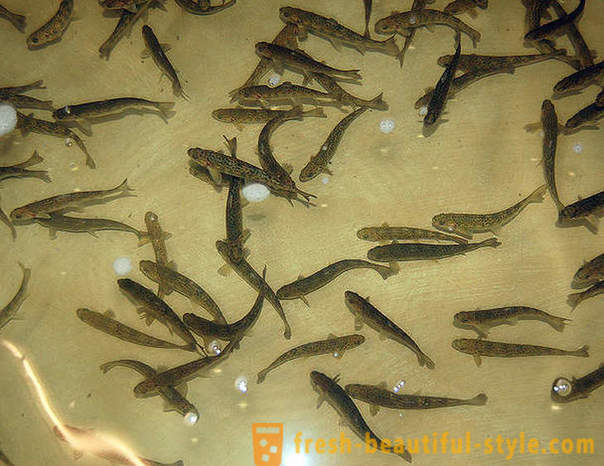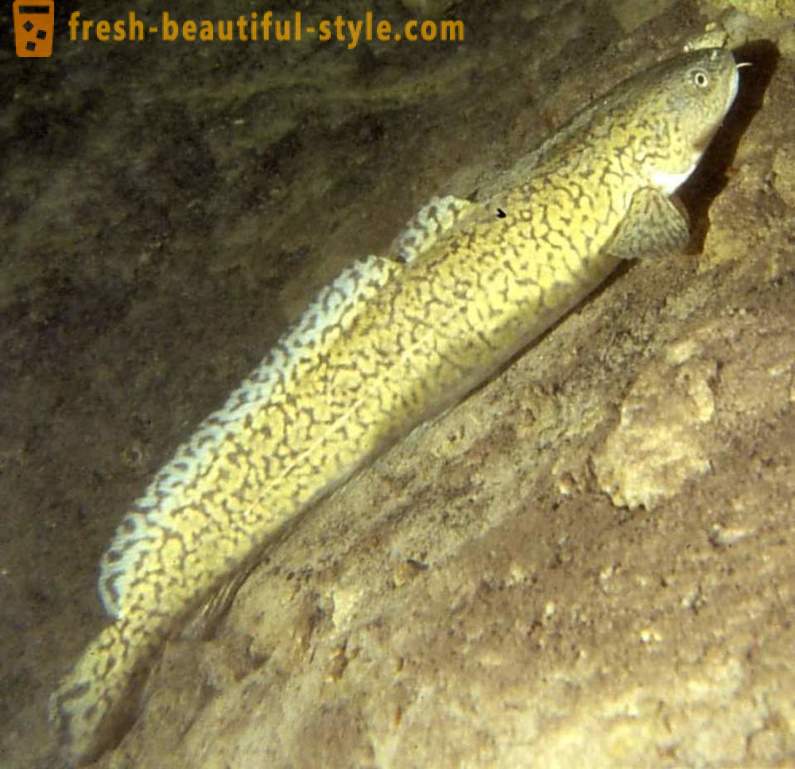Spawning burbot
Burbot is the only representative of cod amongst all species of freshwater fish. It inhabits almost the entire territory of Russia, except the waters of the Caucasus and Kamchatka. Appearance burbot and lifestyle that he leads, are proof that this fish - a relic. She had inherited from their ancestors cold-loving, living during the Ice Age.
Most often, the burbot is found in reservoirs in the northern hemisphere. This fish is especially prevalent in Siberian rivers. Burbot fishing is considered valuable breed. Burbot liver - a real delicacy, rich in fats and vitamin A.

Description
In appearance, the representative of cod something like a catfish. He has a very broad, strongly flattened head, almost like a frog. Eyes small burbot, a small chin barbel. Fish maw wide, with many small teeth.
Ling color primarily depends on the water quality. Typically, the spin and fins grayish green or olive-coated black-brown stripes and spots. Belly and pelvic fins are almost always whitish.
In the waters of our country there are two varieties of this fish: marble and black. Ichthyologists believe that the younger the age of the burbot, so it is darker, and only with years of fish brightens.
For successful catching burbot should consider one interesting feature of this individual: it is about the susceptibility of the spoil to the different sounds. Burbot not only frightened of noise or the human voice, but also goes to them.
Reproduction
The number of male population of the representative of cod is much more than a herd of females, usually two or three times. Burbot reaches sexual maturity in the third year of life. Males begin something like heat, they wove in pairs with the female and fertilize eggs. Mature eggs can even be in a sufficiently small individuals.
Almost all water bodies inhabited by a combination of two types - large and small, the latter painted almost black. Black-headed kind of fish grows faster than the river. They spawn only after reaching a length of 30-35 cm and a weight of about 1, 5 kg. Juveniles burbot is growing very quickly, almost in the same way as other young predator - pike. In places where normal life has favorable conditions, by June fry hatched from eggs in the winter, it reaches a rate of 7 to 9 cm in length. Up to one year of age are small nalimchiki hiding in the rocks, and only by the summer of next year go to great depths to silty place. Predatory fish, this becomes only after puberty.

pre-spawning period
River eel likes to attack the small perch, gobies, ruffe and gudgeon that with the onset of the first frost down to the river bed of the pond, taking the upper limits brovok and fell. With the onset of winter begins prespawning migration burbot. Fish, from the comfort of their holes and snags, gradually climbs up the river. It moves to the middle and small depth at the portions where predominate pebble, sand stone or solid bottom ground structure. Ikrometu this freshwater representative of cod is preceded by a very long pre-spawning Jordania. It extends almost the entire fall and a few days in early December. During this period, the water starts to cool down gradually. Carnivore, awakened from their slumber the summer, moves to the active power mode. The main objects of fish feed in this period is a bottom shallow fry, invertebrates, remains underwater creatures and crustaceans.

The time when burbot is spawning
The largest population of freshwater representative of cod are found in the northern latitudes of our country. Here, this fish lives in almost all reservoirs. Large individuals thrive in a fast-cold rivers. burbot spawning time is approximately the middle of winter, usually in January. For example, spawn of burbot in the Urals took place on the same gluhozime. It must be said that in this region during this period the fishermen extract valuable fish fishing, drilling wells in the middle of the river.
Burbot spawn in Siberia, for example, may begin in the second half of December. Often in the reservoirs of the central part of the country, he shifted to February. Dates burbot spawning depends primarily on the habitat of fish in the region, from a particular lake or river.

How is the burbot spawning
The spawning of cod accompanied by the representative of the active feeding. First on the spawning places are sent inveterate large specimens, gathering in small groups, usually no more than twenty fish. Then begins the spawning burbot, having an average size. Latest nerestelischu to guide the young fish that get in packs to hundreds of copies. Experts believe that they are always moved by the same route. Upstream river burbot have been slow, mainly at night. By nerestelischu their trails pass through rocky areas or gravelly bottom of a relatively shallow depth. Shallow place with solid bottom ground - these are the best conditions for spawning. Ling the period of spawning can often be found in areas with a stony strewn pebbles or bottom shell, on a solid cartilaginous sandy terrain.
The conditions for spawning
During nerestelische to be delayed to the fish do not have to expend a lot of energy to fight with the water flow. The first spawning are large fish, then younger specimens.
Females of this representative prey of cod are very prolific. One big fish can be shedding at about half a million eggs. Naturally, not all of them are hatched fry, besides not all juveniles survives. Many of the offspring destined to become feed underwater inhabitants, for example, perch, ruff, bullhead, white bream and so on. Because burbot spawn during the winter period, in some regions of Russia, where there are its limited population, acts at the time the ban on fishing.

Features of reproduction
Burbot eggs are a yellowish color. They are relatively small - between 0, 8 to 1 mm in diameter, but very numerous. Therefore, the burbot spawning that occurs in winter period, is considered one of the most prolific fish. Despite the fact that small specimens emit up to two hundred thousand, and large - up to half a million and more eggs, the population of this representative of cod is very small. This is explained by the fact that only a small portion of the offspring developing in the young. The vast majority of the eggs hatched fishes or become prey for other fish, or even die due to adverse living conditions.

After spawning,
Burbot spawns in the river, almost always on the small sandy or gravelly areas with relatively moderate current. Females literally "poured" slurry into the space between stone or pit. In this case, a significant part of the eggs takes water before they have time to stick to the bottom ground. A large part of them becomes the prey of other underwater inhabitants. Both young and adult females, already spawn or even just gathering for spawning, eat their same future offspring, which in large quantities is at the bottom and is easily produced feed material. In addition, minnows, perch and ruffs in the period when burbot spawning runs, go to their places of parking and plenty after eating eggs again go back.













































